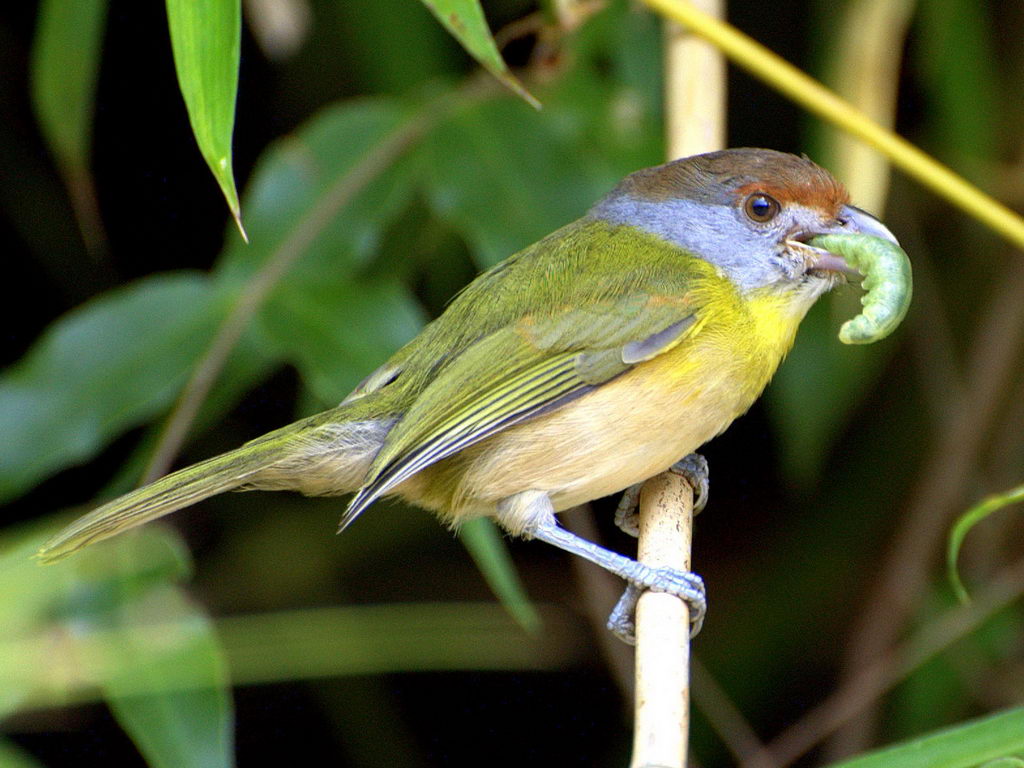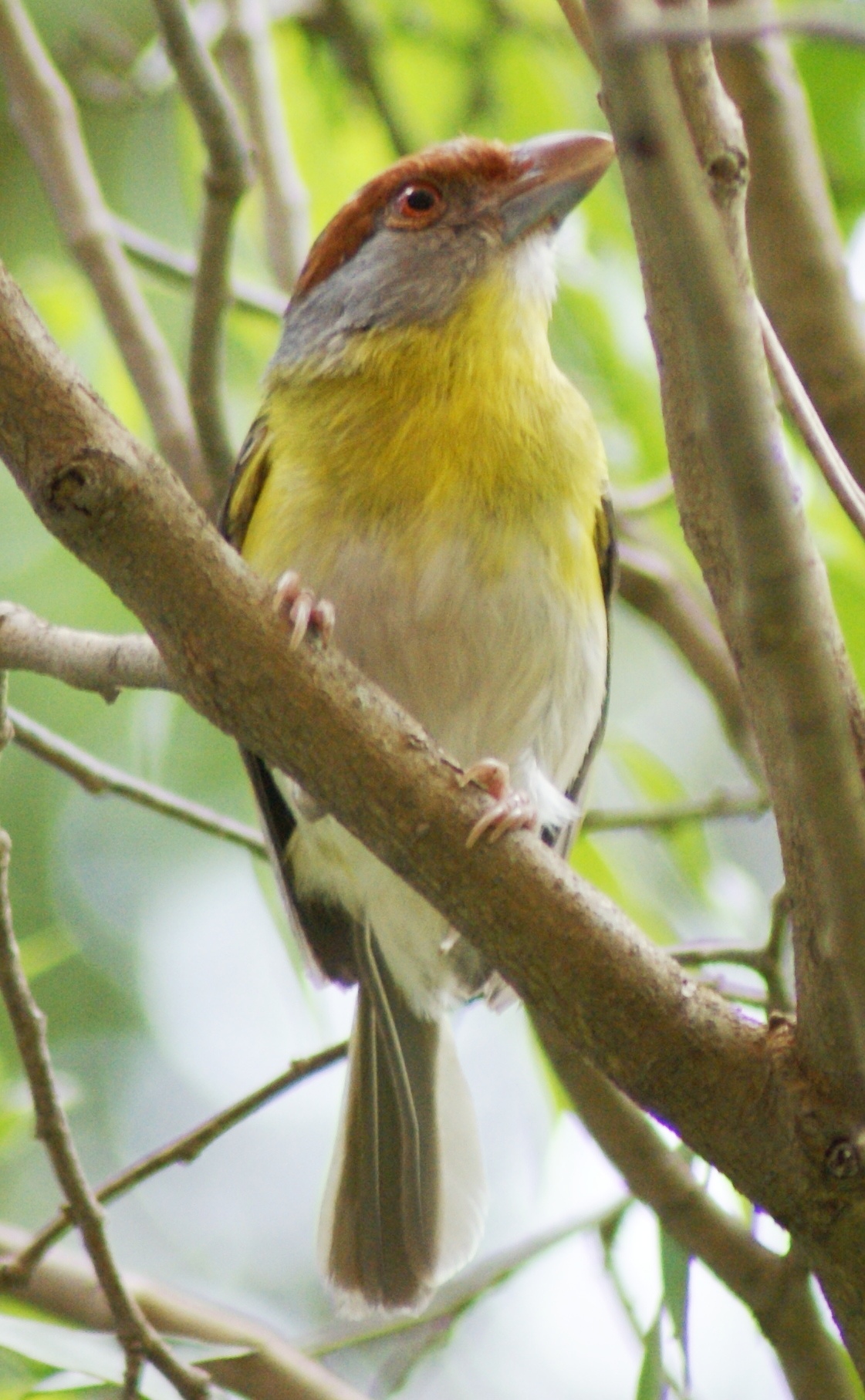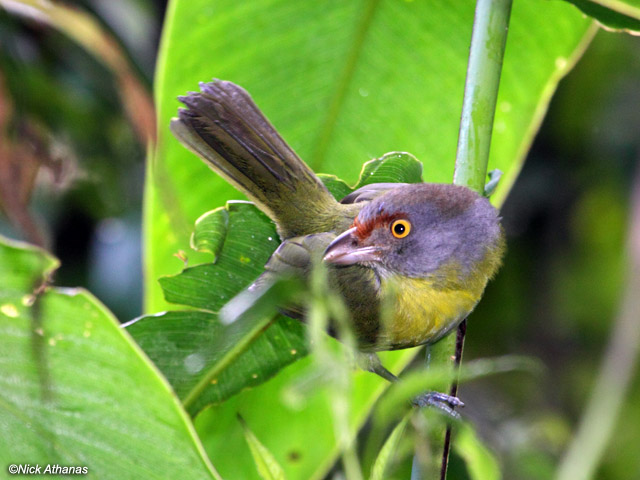
Cyclarhis gujanensis
TAXONOMY
Cyclarhis gujanensis Gmelin J.F., 1789.
OTHER COMMON NAMES
French: Sourciroux mйlodieux; German: Rostbrauenvireo;
Spanish: Alegrнn de Cejas Rojizas.
PHYSICAL CHARACTERISTICS
5.5–6 in (14–15 cm). The body is relatively heavy, the head
large, and the beak stout. The back is dark olive-green, the
chest and flanks are yellow, the belly white, the top of the head
gray, and a broad rufous stripe over the eye.
DISTRIBUTION
Widespread from southeastern Mexico to central Argentina,
but missing from most of Amazonia.
HABITAT
Dry and moist forest borders, scrub, and clearings with trees
present, as high as about 6,600 ft (2,000 m).
BEHAVIOR
A nonmigratory species; defends a breeding territory. The
song—a repeated, musical phrase—is given throughout the
year. Individual birds have several song types, and there are regional
dialects.
FEEDING ECOLOGY AND DIET
Feeds on insects and other invertebrates gleaned from foliage,
flowers, and limbs; also eats small fruits. Occurs in mixedspecies
foraging flocks.
REPRODUCTIVE BIOLOGY
Pairs stay together throughout the year. Builds a cup-shaped
nest that hangs from a forked tree branch. Both parents incubate
the eggs and care for the young.
CONSERVATION STATUS
Not threatened.
SIGNIFICANCE TO HUMANS
None known.
Photo Gallery of - Rufous-browed peppershrike




 Animalia Life
Animalia Life